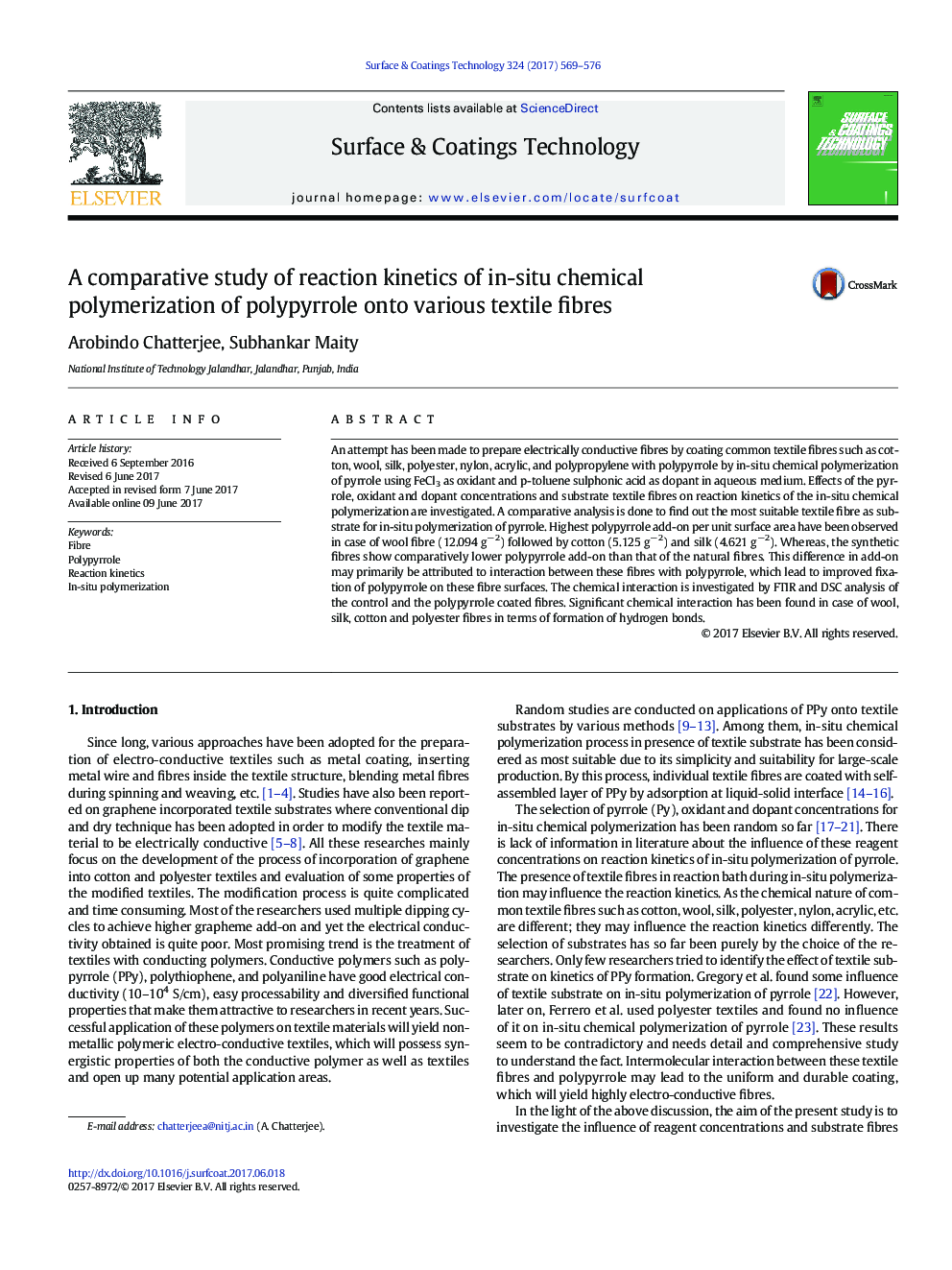| Article ID | Journal | Published Year | Pages | File Type |
|---|---|---|---|---|
| 5465118 | Surface and Coatings Technology | 2017 | 8 Pages |
Abstract
An attempt has been made to prepare electrically conductive fibres by coating common textile fibres such as cotton, wool, silk, polyester, nylon, acrylic, and polypropylene with polypyrrole by in-situ chemical polymerization of pyrrole using FeCl3 as oxidant and p-toluene sulphonic acid as dopant in aqueous medium. Effects of the pyrrole, oxidant and dopant concentrations and substrate textile fibres on reaction kinetics of the in-situ chemical polymerization are investigated. A comparative analysis is done to find out the most suitable textile fibre as substrate for in-situ polymerization of pyrrole. Highest polypyrrole add-on per unit surface area have been observed in case of wool fibre (12.094Â gâ2) followed by cotton (5.125Â gâ2) and silk (4.621Â gâ2). Whereas, the synthetic fibres show comparatively lower polypyrrole add-on than that of the natural fibres. This difference in add-on may primarily be attributed to interaction between these fibres with polypyrrole, which lead to improved fixation of polypyrrole on these fibre surfaces. The chemical interaction is investigated by FTIR and DSC analysis of the control and the polypyrrole coated fibres. Significant chemical interaction has been found in case of wool, silk, cotton and polyester fibres in terms of formation of hydrogen bonds.
Related Topics
Physical Sciences and Engineering
Materials Science
Nanotechnology
Authors
Arobindo Chatterjee, Subhankar Maity,
